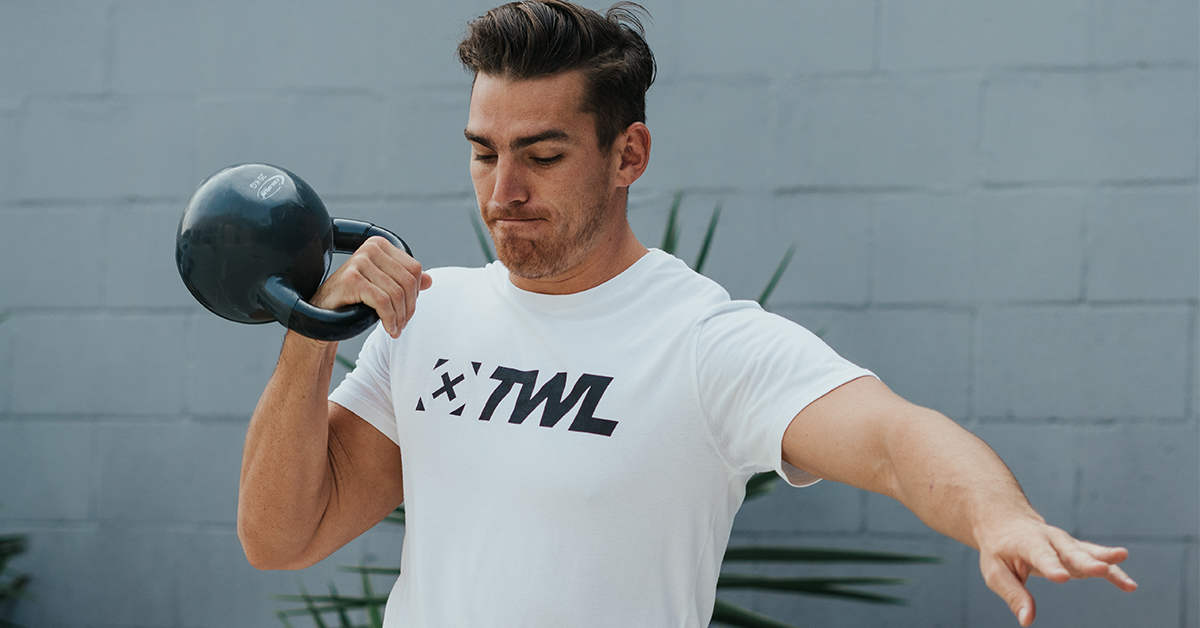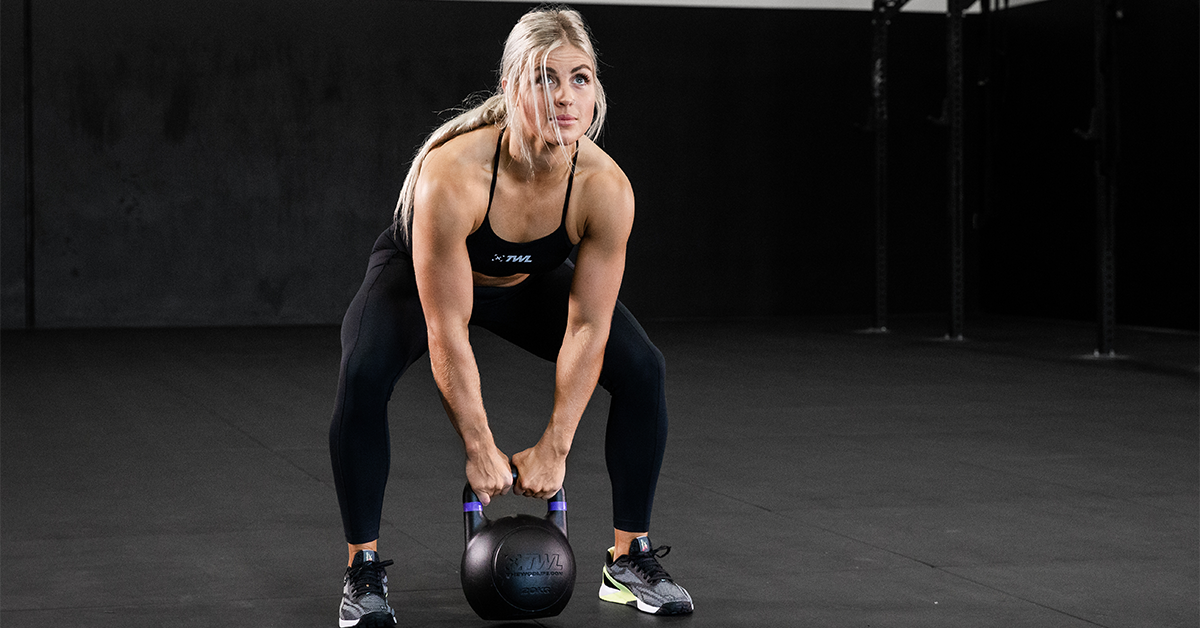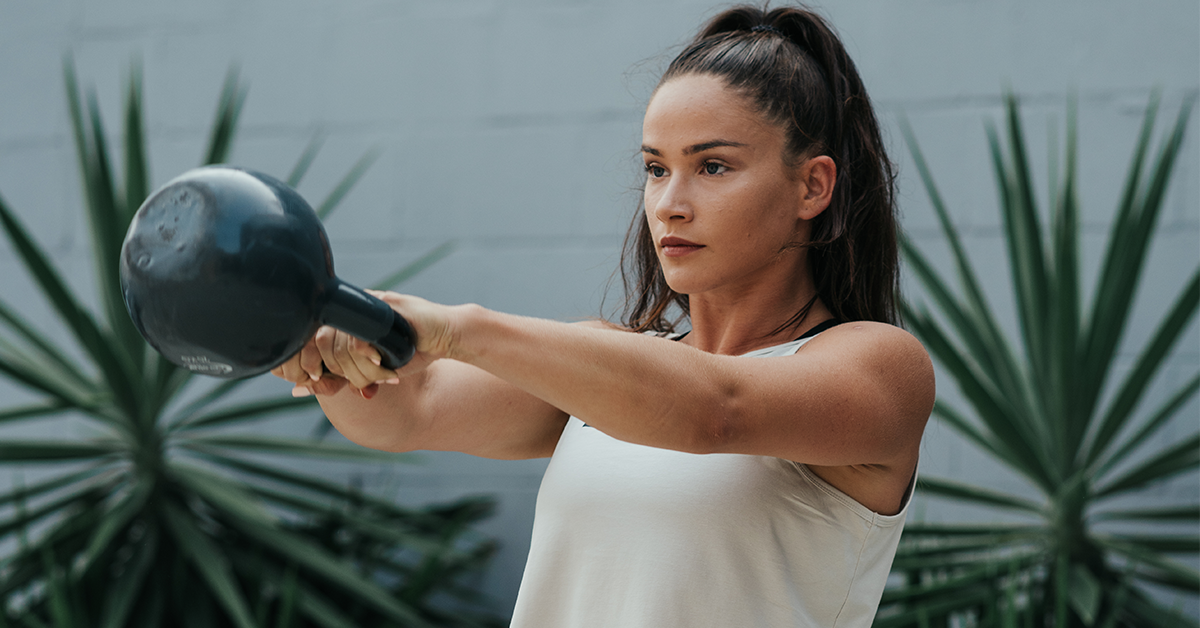Maybe you need a break from the barbell. We feel you. But that doesn’t mean you have to hit the pause button on your squats. Kettlebell squats are a great squat variation. You can even use them as an additional accessory exercise to your regular programming. Let’s jump right in!
Wait, What is a Kettlebell Squat?
Let’s make sure we’re on the same page. When we talk about kettlebell squats, we’re actually referring to a group of exercises. The term reflects any squat that utilizes a kettlebell as opposed to a different piece of equipment.
“Kettlebell squat” can mean a number of different exercises. Let’s start there.
Shop Now
3 Types of Kettlebell Squats
While there are likely infinite ways you can hold a kettlebell and squat with it, here are a few popular variations you might want to try.
1. Kettlebell Goblet Squat
This might be the one you’re most used to. Here’s how you do this kettlebell squat:
- Position your feet approximately hip-width apart.
- Grip the sides of the kettlebell handle in your hands. It should be in front of your chest. Some athletes opt to hold the kettlebell upside down. Do what feels most comfortable for you.
- Perform a squat.
2. Kettlebell Sumo Squat
The kettlebell sumo squat is another go-to.
- Position your feet wider than shoulder-width.
- Bend your legs until you can grip the kettlebell with your hands.
- Stand up with the kettlebell. This is where you start the movement.
- Bend your legs until the KB touches the ground.
- Stand up. That’s one rep.
3. Front Rack Kettlebell Squat
You can perform this one with one or two kettlebells. The premise is the same! This mimics a barbell front squat.
- Place your feet hip-width apart.
- Lift the kettlebell to rest in the front rack position. If you’re using two kettlebells, you’ll have one on each side (like in the video below). You should be holding the handle in front of your shoulder. The KB should be resting on the outside of your forearm, with the elbow tucked in.
- Perform a squat.
These are just a few examples but as we said earlier, there are all sorts of kettlebell squat variations. For example:
- Perform a front rack kettlebell squat into a press, to make a thruster!
- With kettlebell goblet squats, you could add in a jump to up the intensity.
- You can switch up the goblet squat and turn it into a pistol.
- Hold one (or two!) kettlebells overhead for a challenging overhead squat.
Do Kettlebell Squats Build Muscle?
This one is probably obvious: Yes! The kettlebell squat muscles worked will depend on the specific type of squat you’re doing.
Any way you cut it, you’re performing a squat. So, you’re giving your quads, calves, hamstrings, glutes, and hips a serious workout.
Your upper body might also be playing a huge role. For example, to maintain the right position for a kettlebell goblet squat, you need to seriously engage your core. Otherwise, the KB will take you down.
On the other hand, because of the deadlift-esque positioning of the kettlebell sumo squat, you might feel an extra burn in your posterior chain specifically.
But… Are Kettlebell Squats Harder?
This is a tough question to answer because there are always ways to make any movement more challenging.
Instead, let’s look at it as kettlebell squats vs barbell squats. Are KB squats harder than barbell squats? If you’ve never done them before, then certainly. But that’s the case with any new movement. Rather, look at them as simply a different stimulus.
Training with kettlebells adds a layer of difficulty because whereas a barbell rests on your body, KBs can demand more control to hold and stabilize. Try doing an overhead squat first with a barbell and then with two kettlebells of the same weight (when combined). You’ll very likely find the kettlebell overhead squats more challenging.
This is especially going to be the case if you’re performing a unilateral exercise, meaning that you’re working one side of the body at a time. This is the case with one-arm front rack kettlebell squats or overhead squats. This type of exercise will be excellent for finding imbalances and weaknesses on one side of the body. (It’s important to balance these out! When one side of the body is significantly stronger than the other, it does more of the work. Down the line, this can lead to injury.)
3 More Kettlebell Squat Benefits
Aside from the specific muscles that KB squats target, what other benefits will you notice?
1. Better Core Strength and Stability
You need your core for everything — inside and outside of the gym. Squatting with kettlebells will help here, even though you’re not specifically targeting your core. In particular, certain KB squats — especially unilateral ones — are multiplanar. This means that you’re working your core from all directions.
2. Improved Balance
When working with a KB, you control the path it takes (unlike training using a machine and sometimes, even a barbell). As a result of needing to have more control over it, staying firmly and evenly planted between both feet will automatically be improved.
3. More Body Awareness
Training with a barbell tends to be more linear and less dynamic. Because a kettlebell is a smaller piece of equipment that you have to physically hold in your hands, you’re forced to pay more attention to your positioning and technique.
You now know how to do a kettlebell squat (several of them, actually!), you know the difference between kettlebell squats vs barbell squats, and you’re familiar with the benefits and muscles worked. Ready to get started? Awesome! Shop our selection of kettlebells today, and get to work!

















